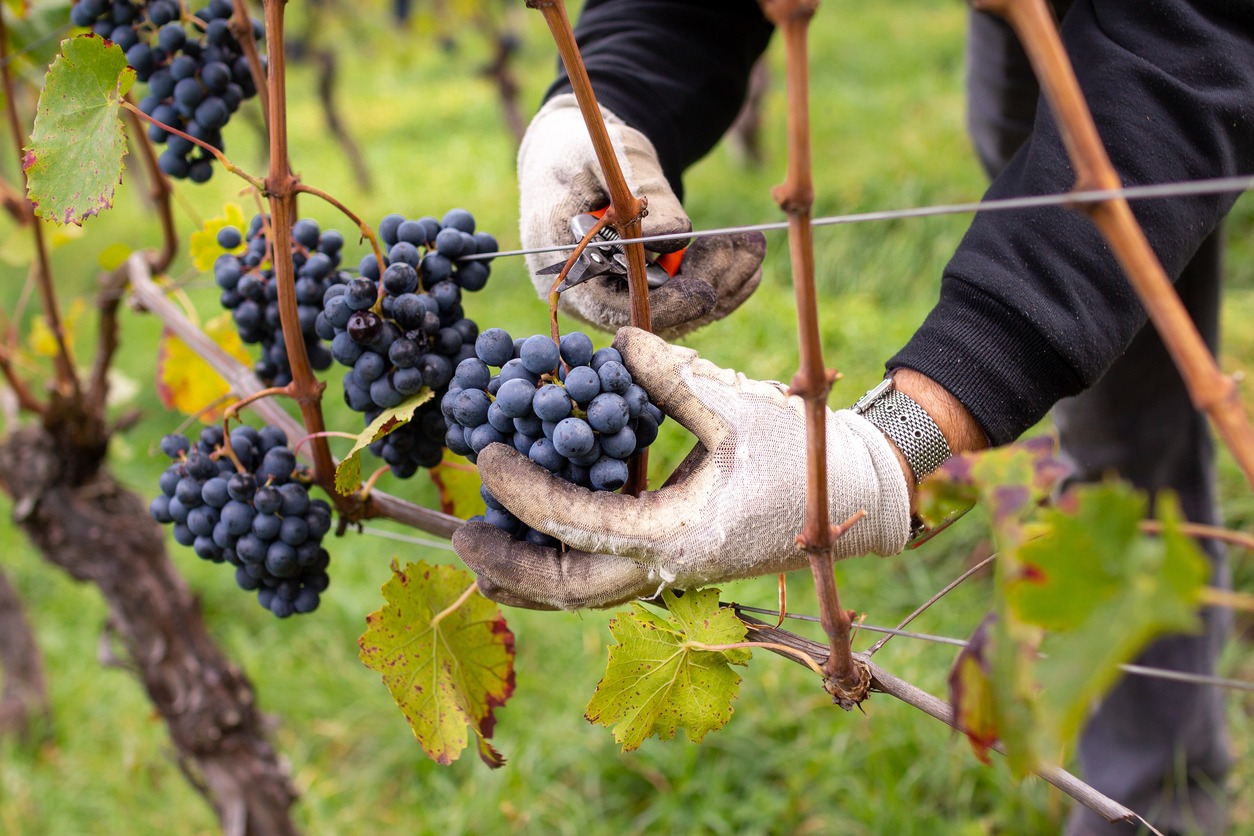Pinot Noir and Shiraz represent two distinct experiences within the world of red wine, each bringing its own unique profile to the palate. Pinot Noir, the fabled grape of the Burgundy region in France, has garnered a reputation for its lighter body and nuanced complexity. Its vines thrive in cooler climates and produce wines that exhibit a spectrum of earthy aromas and bright cherry flavors. The delicate nature of the grape makes it sensitive to its growing environment, which in turn is reflected in the subtle variations across different Pinot Noir wines.
In contrast, Shiraz, also known as Syrah in parts of the world like France, is a varietal that embodies a bolder character. Indigenous to the Rhône Valley but also flourishing in regions like Australia, Shiraz offers a robust full-bodied profile, punctuated by rich flavors of black fruits, pepper, and spice. Despite its intensity, Shiraz is also capable of exhibiting layers of complexity, particularly when given time to mature. The wine’s propensity for aging allows it to develop additional nuances that further enrich its flavor profile.
The choice between Pinot Noir and Shiraz is often a reflection of personal taste and the culinary context. Pinot Noir tends to pair well with dishes that require a wine that won’t overpower the flavors, such as fish or poultry. Shiraz, with its assertive presence, is typically matched with heartier fare like grilled meats and bold cheeses. Both wines, celebrated in their own right, invite wine enthusiasts to explore the varied expressions of red wine.
Origins and History
The distinct histories of Pinot Noir and Shiraz serve as a testament to the rich tapestry of the winemaking tradition. Each variety has developed unique characteristics influenced by its origin.
Pinot Noir Origins

Pinot Noir, with its roots deeply embedded in Burgundy, France, is one of the world’s oldest grape varieties. This region is globally renowned for its exceptional Pinot Noir wines. Historical records suggest that Pinot Noir was cultivated since Roman times; however, the grape gained prominence in Burgundy by the 1st century BC, suggesting a long and storied history intertwined with French winemaking traditions.
Shiraz Origins
Shiraz, also known as Syrah in France and elsewhere, has a mysterious origin story. While it’s firmly established within the Rhône Valley, there are theories that point to its history reaching back to the Middle East. However, experts often regard the Rhône Valley as the traditional home where Shiraz’s bold characteristics were first harnessed. Its cultivation in regions such as Australia has further solidified Shiraz’s reputation, with Australian Shiraz offering a unique and powerful profile that reflects its newer terroir.
Wine Profile Characteristics
Pinot Noir and Shiraz, each with their distinctive profiles, offer a range of experiences to the discerning palate through their flavor, body, and other sensory attributes.
Flavor Profile
Pinot Noir typically presents a flavor spectrum that includes red fruits like cherries and berries. Its spice notes are more subtle, often manifesting as hints of clove or cinnamon. In contrast, Shiraz asserts itself with bold flavors of blackberry, pepper, and pronounced spicy characteristics.
Body and Tannin Structure
The body of a wine refers to its weight and overall mouthfeel. Pinot Noir is regarded for its light-bodied to medium-bodied nature with modest tannins, which contributes to a smoother mouthfeel. Shiraz stands at the fuller end of the spectrum, often described as full-bodied with a robust tannin structure, giving the wine a gripping sensation.
Acidity and Alcohol Content
Pinot Noir wines possess a notable acidity, which lends to their characteristic brightness and supports the wine’s aging potential. They typically have a moderate alcohol content. In the case of Shiraz, wines from warmer regions can display higher alcohol levels, contributing to their fuller body and intensity. The acidity in Shiraz is usually less pronounced than in Pinot Noir, balanced by the ripe fruit and tannins.
Climate and Cultivation
Within the winemaking world, the specificities of climate and soil composition play pivotal roles in the growth and development of wine grapes like Pinot Noir and Shiraz. These factors not only influence the geographical distribution of these varieties but also their individual characteristics.
Geographical Climate Impact
Pinot Noir grapes are known for their preference for cooler climates and are prominently grown in regions like Burgundy, Germany, and the cooler parts of the United States. The cool climate allows for a longer growing season which is essential for developing the grape’s characteristic flavors and maintaining a balance between sugars and acidity.
- Cool Climate Characteristics:
- Slower ripening process
- Lower sugar levels
- Higher acidity
Shiraz, or Syrah, thrives in warmer climates such as those found in Barossa Valley and parts of the United States. The warmth accelerates ripening, resulting in bolder, full-bodied wines with richer concentrations of fruit flavors and tannins.
- Warm Climate Characteristics:
- Faster ripening process
- Higher sugar levels
- Bolder fruit flavors
Soil and Harvesting
Soil type also differentiates the cultivation of Pinot Noir and Shiraz. Pinot Noir grapes often find their best expression in calcareous and limestone-rich soils, which are typical of regions like Burgundy. These soils provide good drainage and retain warmth, which aids in the grape’s delicate development process.
- Burgundy Soil Traits:
- High in limestone
- Excellent drainage
- Warmth retention
In contrast, Shiraz grapes are less finicky about soil composition but do well in well-drained soils, including those that are rocky or sandy. Such soil structures help in achieving the optimal ripening needed for producing Shiraz’s full-bodied and spicy profile.
- Barossa Valley Soil Traits:
- Rock and sand components
- Well-drained
- Warm conductivity
Harvest timings for these varietals are influenced by their climatic conditions; Pinot Noir is typically harvested earlier due to cooler climates slowing the ripening process, while Shiraz is harvested later in warmer regions, allowing for full flavor development.
Culinary Pairings
Pinot Noir and Shiraz offer distinct flavor profiles, making them suited to pair with different types of dishes. The choice in wine can enhance the taste experience of a meal, complementing or contrasting flavors.
Food Pairings for Pinot Noir
Meat: Pinot Noir complements lighter meats. It pairs exceptionally well with:
- Chicken: A fruitier Pinot Noir can elevate poultry dishes.
- Duck: The earthiness of Pinot Noir harmonizes with duck’s rich flavors.
Seafood:
- Salmon: The wine’s subtlety doesn’t overpower the fish’s taste.
Vegetarian Dishes:
- Mushrooms: Earthy dishes like mushroom risotto resonate with Pinot Noir’s aromatic profile.
Pasta:
- Cream-based pasta sauces can be nicely matched with the wine’s acidity and delicate fruit notes.
Food Pairings for Shiraz
Meat: Shiraz pairs robustly with red meats due to its fuller body and tannic structure.
- Lamb: The bold flavors of lamb are a match for Shiraz’s intensity.
- Steak: A peppery Shiraz can complement a well-seasoned steak.
Pork:
- Rich pork dishes can balance the spice and boldness found in Shiraz.
Food Pairings:
- Hearty stews and meat-based pasta dishes can stand up to the richness of Shiraz.
Aging and Storage
Aging potential and optimal storage conditions are crucial for enhancing the quality and flavor profiles of both Pinot Noir and Shiraz. The following subsections detail the aging potential and storage guidelines specific to each wine type.
Pinot Noir Aging Potential
Pinot Noir, known for its delicate profile, can benefit greatly from proper aging under the right conditions. Oak aging complements Pinot Noir with subtle hints of vanilla and smoke, owing to the interaction between the wine and the oak barrels. Depending on the wine’s origin and production quality, a Pinot Noir may initially display vibrant red fruit flavors which, over time, evolve into more complex notes of leather and earth. Ideal aging temperatures for Pinot Noir range between 55-60°F (13-16°C). This range helps maintain the wine’s intricate balance of flavors without accelerating the aging process too rapidly, which can result in the loss of desired characteristics. When it comes time to serve a well-aged Pinot Noir, it should be slightly chilled to around 55°F (13°C) to ensure the nuanced flavors are properly showcased.
Shiraz Aging Potential
Shiraz stands out with its bold flavor and higher alcohol content, and it has a remarkable ability to age and develop complexity. The aging process allows the full-bodied nature of Shiraz to mellow, integrating the flavors and softening the tannins. Aging in oak barrels introduces layers of vanilla, smoke, and even spicy nuances that enhance the wine’s inherent qualities. High-quality Shiraz can be stored for many years under controlled conditions, with temperatures ideally maintained just below Pinot Noir’s range, around 53-57°F (12-14°C). Serving Shiraz involves bringing the bottle to a slightly warmer temperature than Pinot Noir, typically around 60-65°F (15-18°C), to accentuate its robust character and richness.
By adhering to these aging and storage guidelines, collectors and enthusiasts can help both Pinot Noir and Shiraz wines reach their full potential, offering an optimal tasting experience.
Popular Regions and Labels
When exploring Pinot Noir and Shiraz wines, their distinct characteristics often reflect the regions where they are produced. Wine enthusiasts recognize certain areas for producing exceptional labels of each varietal.
Notable Pinot Noir Wines

California stands out with its Sonoma Coast and Russian River Valley, where Pinot Noir vines thrive, producing wines with a balance of acidity and ripe fruit flavors. Domaine de la Romanée-Conti from France’s Burgundy region is one of the world’s most prestigious and expensive Pinot Noirs, highlighting the grape’s elegance.
- France:
- Burgundy: Domaine de la Romanée-Conti, Louis Latour
- California:
- Sonoma Coast: Kosta Browne, Flowers Vineyard & Winery
- Russian River Valley: Williams Selyem, Rochioli
- New Zealand:
- Central Otago: Felton Road, Amisfield
- South Africa:
- Walker Bay: Hamilton Russell Vineyards, Bouchard Finlayson
Notable Shiraz Wines
Australia is renowned for its Shiraz, particularly from the Barossa Valley and McLaren Vale, with their warm climates leading to bold, full-bodied wines. Penfolds Grange is an iconic Australian Shiraz, known for its richness and potential to age.
- Australia:
- Barossa Valley: Penfolds Grange, Henschke Hill of Grace
- McLaren Vale: d’Arenberg, Mollydooker
- South Africa:
- Stellenbosch: Boekenhoutskloof, Rust en Vrede
- France:
- Rhône Valley: Guigal, Chapoutier
Final Thoughts
The journey through the distinct worlds of Pinot Noir and Shiraz uncovers the rich tapestry that is red wine, showcasing how two varietals can offer vastly different tasting experiences, histories, and affinities with food. Pinot Noir, with its delicate flavors, subtle aromas, and affinity for cooler climates, contrasts sharply with the bold, spicy, and robust nature of Shiraz, which thrives in warmer regions. This exploration not only highlights the importance of terroir in shaping a wine’s character but also underscores the diverse spectrum of red wine, inviting enthusiasts to appreciate the nuanced differences that make each varietal unique.
Understanding the difference between Pinot Noir and Shiraz is not just an exercise in tasting; it’s a gateway to deeper appreciation of wine culture, viticulture, and the art of winemaking. Whether you’re drawn to the elegance and complexity of Pinot Noir or the powerful and hearty nature of Shiraz, each sip offers a story of its origin, the passion of its makers, and the potential for memorable pairings. As we continue to explore and savor the wide array of wines available, the comparison between Pinot Noir and Shiraz serves as a reminder of the endless possibilities for discovery and enjoyment within the world of wine.f


